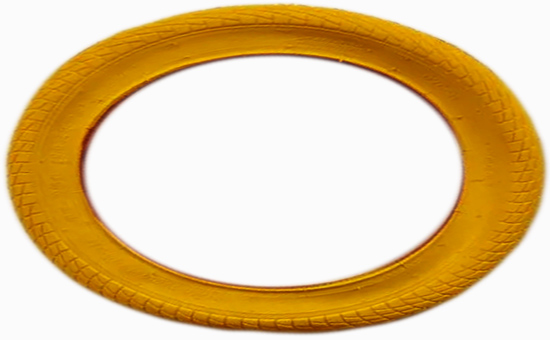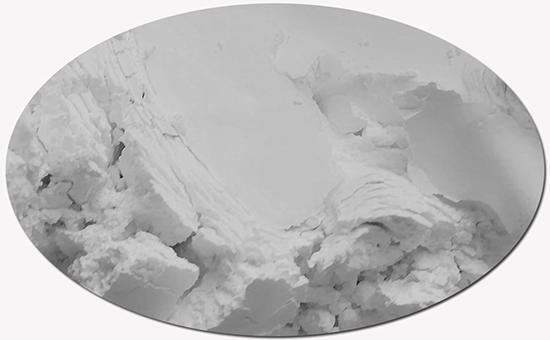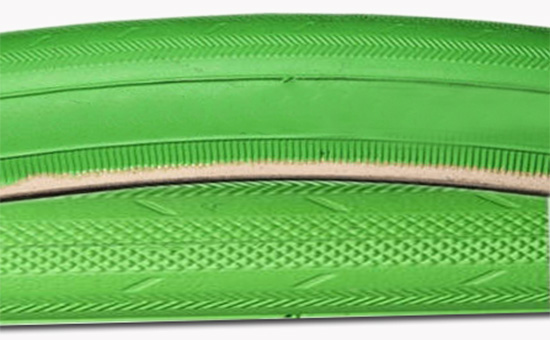
Calcium carbonate is one of the most commonly used inorganic rubber fillers in the production of rubber products. It can achieve the purpose of improving the performance of rubber materials, reducing the amount of expensive rubber, and increasing the volume of products. It has multiple functions such as coloring, isolation and release. The amount of calcium carbonate in natural rubber products is large, and the use of calcium carbonate in color bicycle tires can effectively reduce the cost of raw materials. So how much calcium carbonate is appropriate for natural rubber to produce colorful bicycle tires? Can it be filled in large quantities? How to choose the right calcium carbonate product?
1. Natural rubber mixed with calcium carbonate to produce color bicycle tire formula
70 parts of natural rubber, 30 parts of styrene butadiene rubber, 5 parts of zinc oxide, 2.5 parts of stearic acid, 2.3 parts of sulfur, 0.4 parts of accelerator M, 0.6 parts of accelerator CZ, 2 parts of antioxidant SP, 1.2 parts of paraffin wax, ultrafine 78 parts of calcium carbonate, 5 parts of titanium dioxide, 2 parts of coumarone, 1.5 parts of engine oil; total: 200.5 parts.
2. Varieties and performance characteristics of common calcium carbonate
Calcium carbonate is made from natural marble, limestone, chalk, calcite, dolomite or shells through crushing, winnowing and other processes. According to the particle size, it can be divided into heavy calcium carbonate, light calcium carbonate and ultrafine calcium carbonate, etc. .

The particle size of heavy calcium is about 10μm. The main function of heavy calcium in rubber products is filling and compatibilization. It can also be used as a coloring agent, release agent and release agent. It has good mixing performance with rubber and has no reinforcing effect. Light calcium has a particle size of 0.5-0.6μm, has semi-reinforcing properties, is easy to disperse in the rubber, and can reduce the cost while improving the tensile strength, tear strength and wear resistance of the rubber 2YLYY1011. The particle size of ultrafine calcium carbonate is among 0.01-0.1μm, the particle size is extremely small, the activity is high, and the reinforcement performance is significantly better than that of light calcium.
3. Commonly used calcium carbonate varieties for natural rubber colored tires
When using natural rubber as the main raw material to prepare colored bicycle tires, ultra-fine calcium carbonate is often used. Theoretically, ultra-fine calcium carbonate has a better reinforcing effect in rubber. The elongation at break, tear resistance, compression set and flexural resistance of natural rubber colored bicycle tire vulcanized rubber using ultra-fine calcium carbonate are better than ordinary Calcium carbonate has the dual functions of strengthening and whitening in the color tire.
4. Points to note when using superfine calcium carbonate in natural rubber colored tires

The smaller the particle size of ultrafine calcium carbonate is, the larger the specific surface area in which it can infiltrate with the rubber, which leads to difficulty in dispersing calcium carbonate. When the particle size is below 0.1μm, the surface energy increases and rubber mixing tends to generate heat and cause sticking to the roll. At this time, it is necessary to appropriately adjust the formula, adjust the feeding sequence, operating temperature, etc. during mixing, or appropriately add a dispersing aid to improve the dispersion effect of ultra-fine calcium carbonate in natural rubber.
When ultra-fine calcium carbonate is used in natural rubber color tires to reduce production costs, excessive calcium carbonate will also cause problems such as insufficient mechanical strength of the vulcanized rubber and white color tires. Therefore, it is necessary to control the amount of calcium carbonate reasonably. In actual production, to reduce the production cost of natural rubber colored bicycle tires, rubber product manufacturers can also use reclaimed rubber in an appropriate amount, mainly including latex reclaimed rubber, tire reclaimed rubber, and isoprene reclaimed rubber. Later editors have the opportunity to continue with you discuss.
Exclusive original article [commercial authorization] reprint, excerpt and excerpt in any form are prohibited without written authorization. Focus on Hongyun rubber: learn the process formula and raw material technology of producing rubber products from recycled rubber to help you reduce costs and increase profits